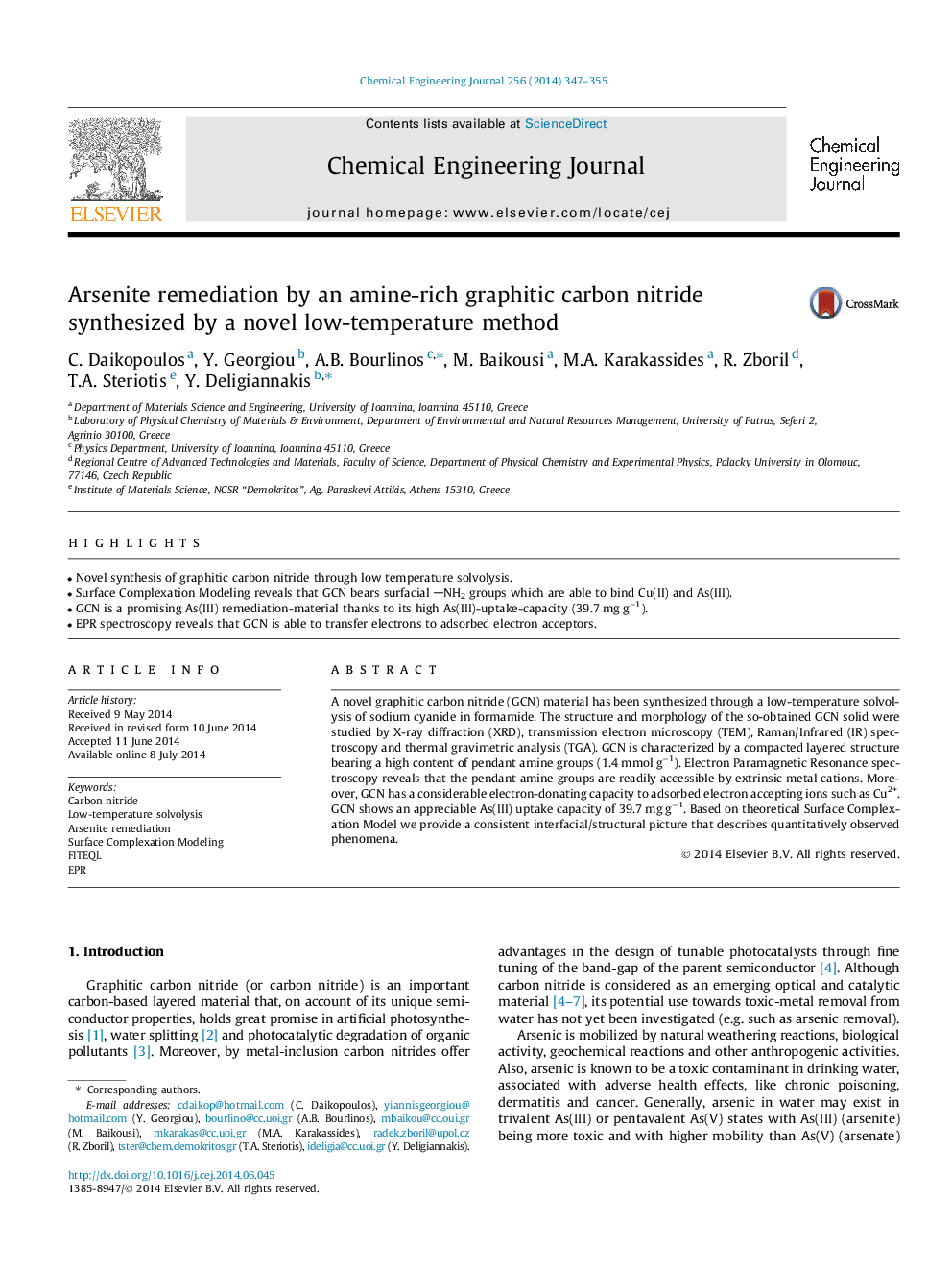| Article ID | Journal | Published Year | Pages | File Type |
|---|---|---|---|---|
| 147031 | Chemical Engineering Journal | 2014 | 9 Pages |
•Novel synthesis of graphitic carbon nitride through low temperature solvolysis.•Surface Complexation Modeling reveals that GCN bears surfacial NH2 groups which are able to bind Cu(II) and As(III).•GCN is a promising As(III) remediation-material thanks to its high As(III)-uptake-capacity (39.7 mg g−1).•EPR spectroscopy reveals that GCN is able to transfer electrons to adsorbed electron acceptors.
A novel graphitic carbon nitride (GCN) material has been synthesized through a low-temperature solvolysis of sodium cyanide in formamide. The structure and morphology of the so-obtained GCN solid were studied by X-ray diffraction (XRD), transmission electron microscopy (TEM), Raman/Infrared (IR) spectroscopy and thermal gravimetric analysis (TGA). GCN is characterized by a compacted layered structure bearing a high content of pendant amine groups (1.4 mmol g−1). Electron Paramagnetic Resonance spectroscopy reveals that the pendant amine groups are readily accessible by extrinsic metal cations. Moreover, GCN has a considerable electron-donating capacity to adsorbed electron accepting ions such as Cu2+. GCN shows an appreciable As(III) uptake capacity of 39.7 mg g−1. Based on theoretical Surface Complexation Model we provide a consistent interfacial/structural picture that describes quantitatively observed phenomena.
